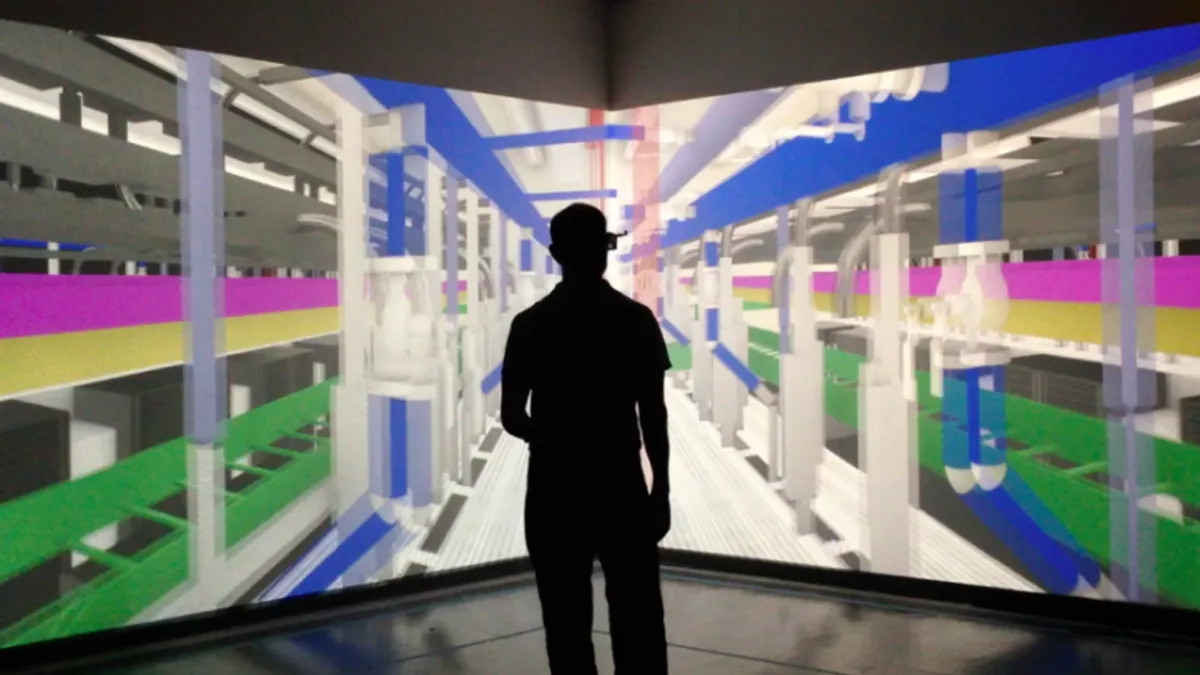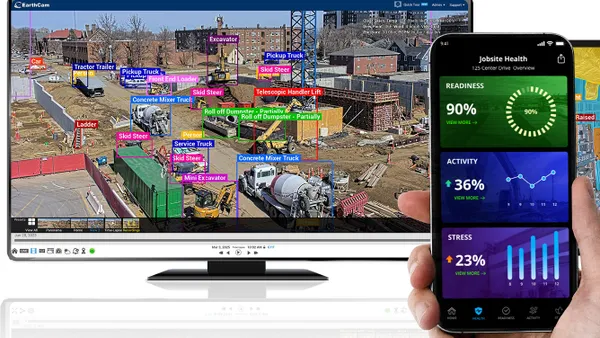Dive Brief:
- Construction industry leaders like Gilbane Building Co., Gensler and AECOM are testing augmented reality tools in the field to determine how the technology can assist in design and production, according to the MIT Technology Review.
- In a test run on one of its projects, a Gilbane manager was able to use the Microsoft Hololens-based system to detect a design flaw, preventing the company from spending $5,000 on the wrong material.
- Hololens works with building visualization software from companies like Autodesk and Trimble, allowing the user to see holographic images of the unbuilt portions of a project as overlays onto what has already been completed.
Dive Insight:
Construction is a $10 trillion business, and Hololens developers are hoping that their device can increase efficiencies to keep companies on track, both financially and schedule-wise. Gilbane officials said the tool could be particularly beneficial during complicated duct and piping layout, as well as in the curtain wall fabrication process.
However, according to Technology Review, there are some bugs that need to be worked out in the system. For example, Hololens does not allow for peripheral vision, diminishing the overall visual experience. In addition, the Hololens lenses are not designed yet to be as sturdy as construction safety goggles. The greatest worries, though, seem to be around possible user disorientation and the dangerous situations it could create, especially on multistory projects. While the technology may need to be tweaked, Gilbane officials said they expect it to be useful to them in the future.
Back in 2014, research firm Gartner said that augmented reality was far along enough in its development to be useful to the construction industry. Gartner suggested that not only could augmented reality assist in job site construction or design but that it might have a role to play in safety training, allowing companies to gauge employee reaction to dangerous situations within a virtual environment.
Augmented reality is part of the virtual reality world that industry players have said creates a new level of collaboration possibilities between various construction project stakeholders. For example, the technology allows owners to see their finished building before the first shovel hits the ground. Autodesk's Stacy Scopano told Construction Dive in May that as the technology becomes more widely available, users will "define and redefine" it for their own needs, spurring more advancement in the field.













